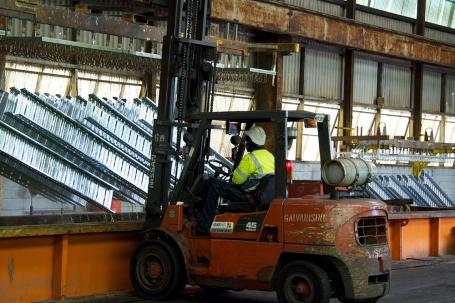Influence of Thermal Cutting
Flame-cutting, laser-cutting and plasma-cutting changes the steel composition and structure in the zone on and around the cut surface, so that the minimum coating thickness may be more difficult to obtain and the coating may also exhibit a decreased cohesion/adhesion to the steel substrate.
Cutting at these high temperatures makes the steel surface or the cut edge less reactive due to the depletion of alloying elements at these areas. The formation of zinc/iron alloy layers during the galvanising process will be reduced and these areas will, upon withdrawal from the zinc kettle, have a somewhat thinner coating.
The thinning effect is illustrated on the two accompanying micrographs shown in Figure 1 & 2 showing the zinc coating on an 8 mm thick steel part. The thickness of the coating at the edge of the part shown in Figure 1 is approximately 60 μm whereas in Figure 2, 10 mm from the cut edge, there is approximately 100 um.

In order to obtain more reliable coating thicknesses that meet the requirements of AS/NZS 4680:2006 and to ensure adequate cohesion/adhesion of the coating, flame-cut, laser-cut and plasma-cut surfaces should be ground off by the fabricator and sharp edges should be removed prior to galvanising.
Material supplied by the GAA.

